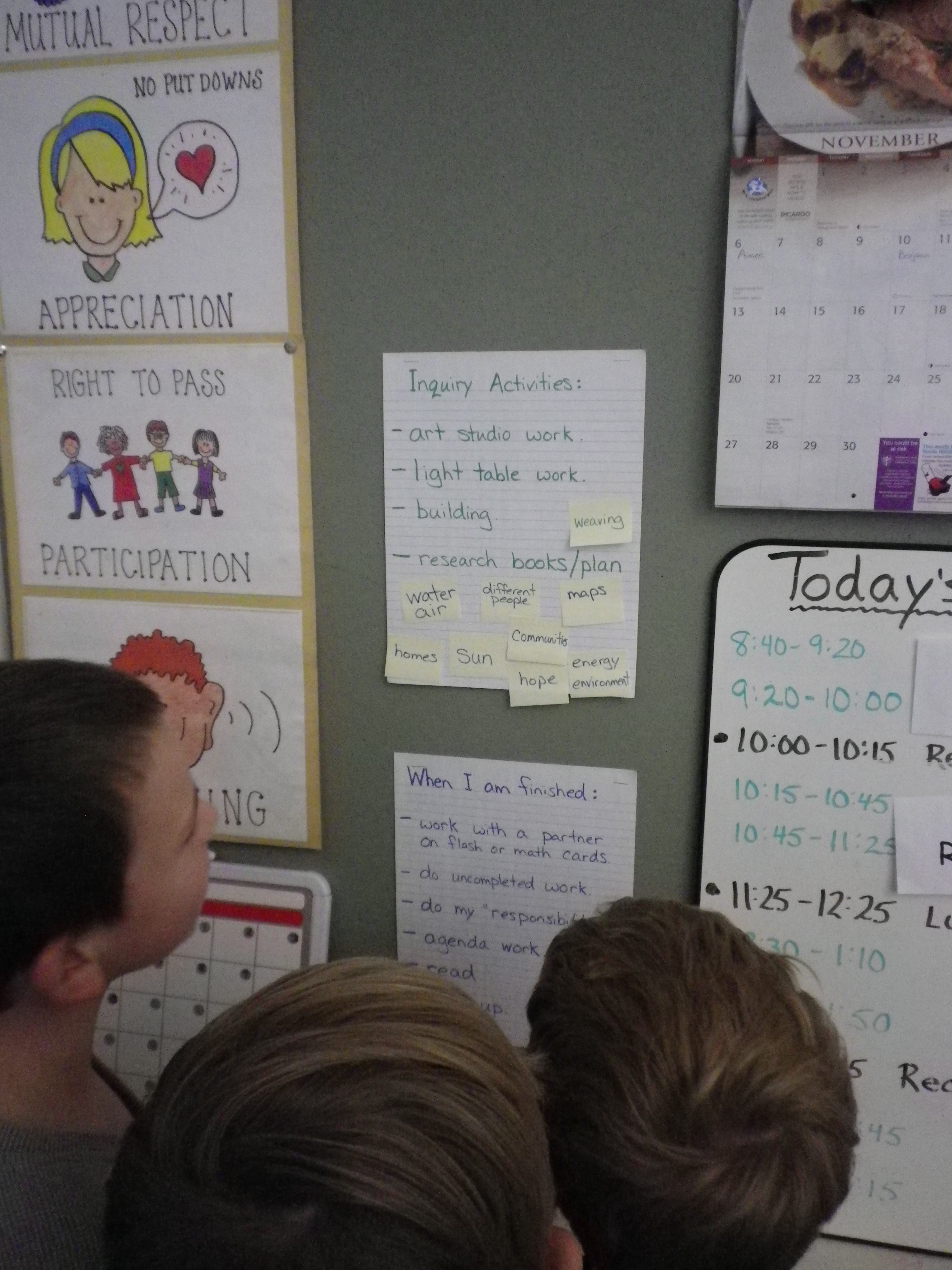Back in September, I allotted time to establish the many routines in the classroom. For the grade one’s in the class, most of their learning consisted of new routines. As the children were more comfortable with the expectations in the classroom, we then focused on their work. Then, by the end of October it was already time to gather assessments and start planning for the Progress Reports.
I realized that the students needed to know what they were being assessed on and what the success criteria for achievement would be. We started by co-constucting the criteria for Level 4 on such things as writing a letter, a procedure, or a recount. We added sticky notes to our anchor charts with reminders. The children then assisted in the selection of their best piece using the success criteria as their guide.
We also reviewed the Learning Skills together. Reviewing Responsibility coincided well with our focus on students demonstrating Responsibility with the TDSB Character Education Traits. We created a “My Responsibilities” corner in the classroom to provide a reference area for the students who need support or visual checkpoints to assist with their self-regulation and determine what their responsibilities are. The area includes a schedule for the day, the job chart with names attached on clothespins, our TRIBES agreements, the TDSB Character Traits, a list of tasks that can be done if their work is finished, and an inspiration chart for independent inquiry work.
I have found that this corner of the room is frequented more than I had planned. It assists the children with their self-regulation in the classroom, as there are times throughout the day that some children have completed their work before others. These students are able to refer to the “My Responsibilities” corner independently, and the result is less need for direct classroom management. It also benefits the children’s development of their learning skills and supports their understanding of the assessment of their learning skills.



